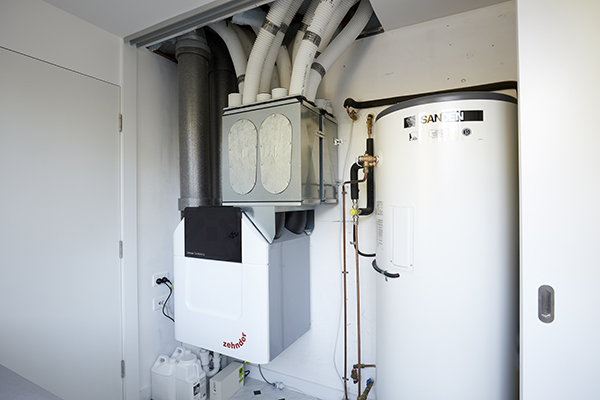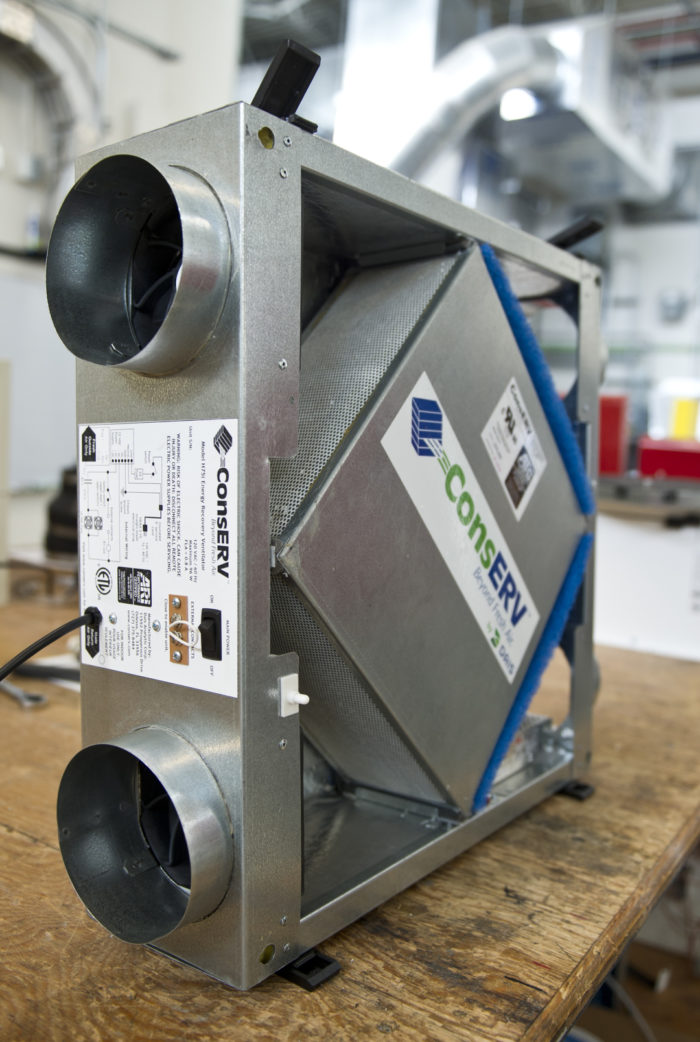Ways to Cut Costs with HRV in Warm Climates
Unveiling the Secret Advantages and Uses of Heat Recovery Ventilation in Sustainable Layout
Heat Recovery Ventilation (HRV) systems play an essential role in lasting style. They assist in a continuous exchange of stagnant indoor air with fresh exterior air, greatly enhancing indoor air quality. HRVs add to energy effectiveness by recovering warmth from worn down air, which can lower energy costs. Understanding the complex advantages and applications of HRVs reveals their significance in contemporary architecture. What other advantages do these systems supply in the search of sustainability?
Comprehending Heat Recovery Ventilation Solutions
Heat recovery ventilation (HRV) systems are created to improve interior air high quality while reducing power loss. These systems use a mechanical air flow technique to exchange stagnant interior air with fresh outside air, making certain a continuous supply of clean air. By catching warm from the exhaust air, HRVs precondition incoming air, reducing the demand on home heating and cooling systems. This process not just enhances thermal comfort but also adds to energy efficiency in household and commercial structures. Furthermore, HRV systems assist manage humidity degrees and decrease indoor toxins, promoting a much healthier living setting. Their calculated execution is vital for accomplishing lasting layout objectives, as they provide a balance in between energy preservation and owner well-being.
How HRV Solution Job
While several might be familiar with ventilation systems, recognizing just how warmth recuperation air flow (HRV) systems operate is necessary for valuing their benefits. HRV systems operate by trading stale indoor air with fresh exterior air while transferring heat between both streams. This process occurs in a warmth exchanger, where warmth from the outbound air warms the inbound air during chillier months, decreasing power loss. Alternatively, in warmer months, the system can cool down incoming air making use of the cooler outward bound air. HRVs are furnished with fans to help with airflow and filters to eliminate particulates, ensuring a constant, balanced air flow process. This innovative layout not just improves energy performance but likewise adds to preserving a comfy indoor environment.
Enhancing Indoor Air High Quality
Interior air high quality can greatly influence wellness and wellness, making effective ventilation vital in modern homes. Heat Recovery Ventilation (HRV) systems play an important role in preserving indoor air high quality by constantly exchanging stale indoor air with fresh outside air. This procedure not just minimizes air-borne toxins yet also lessens humidity degrees, which can result in mold and mildew growth and respiratory issues. HRV systems filter inbound air, getting rid of irritants and particulates, thereby providing a much healthier living environment. In addition, these systems help get rid of odors and unpredictable organic substances (VOCs) commonly located in family products. By ensuring a regular circulation of clean air, HRV systems add to an overall enhanced interior atmosphere, promoting comfort and wellness for occupants.
Power Effectiveness and Price Cost Savings
Power effectiveness stands apart as a substantial advantage of Heat Recovery Ventilation (HRV) systems. By capturing and reusing the heat from worn down indoor air, HRVs reduce the energy needed for heating inbound fresh air, causing minimized energy usage. This performance equates into lower utility costs, offering substantial expense savings for house owners and services alike. Additionally, HRV systems typically receive energy performance rewards and discounts, further enhancing their economic charm. With time, the initial financial investment in HRV technology can cause a favorable return on investment via reduced energy expenses. The combination of HRV systems not only advertises sustainable design however also provides a useful remedy for accomplishing long-term energy financial savings and financial benefits.
Ecological Benefits of HRV

A plethora of ecological benefits emerges from the execution of Heat Recovery Ventilation (HRV) systems. By effectively transferring heat from exhaust air to inbound fresh air, HRVs significantly minimize the power required for heating and cooling rooms. This power performance equates to lower greenhouse gas discharges, adding to a decline in the total carbon impact of structures. Additionally, HRV systems enhance indoor air high quality by constantly distributing fresh air, consequently lowering the focus of indoor toxins and allergens. The decrease in energy intake help in saving natural resources, making HRVs an essential component of lasting design. On the whole, the environmental benefits of HRVs play an essential function in advertising a much healthier planet and cultivating green structure techniques.
Versatile Applications in Modern Style
Heat recovery ventilation (HRV) systems are significantly being incorporated right into both household and business architectural tasks. In residential setups, HRVs enhance interior air high quality while taking full advantage of power performance. Meanwhile, in business spaces, these systems optimize ventilation techniques, showing their versatility in modern-day architectural applications.
Residential Projects Combination
While modern design progressively stresses sustainability, the integration of warm recuperation air flow systems in domestic jobs has emerged as a useful service for enhancing interior air quality and power performance. These systems efficiently move heat from exhaust air to inbound fresh air, decreasing energy loss and lowering heating or cooling down needs. In brand-new builds and retrofits alike, warm recovery ventilation can be effortlessly incorporated, giving house owners with a healthier living environment while lowering utility expenses. Additionally, with enhancing recognition of ecological influences, more architects and building contractors are identifying the lasting benefits of these systems. Therefore, warm recuperation air flow has actually come to be a critical element of lasting property style, showcasing convenience and commitment to environmentally friendly techniques.
Business Areas Optimization
As modern-day commercial rooms evolve to satisfy the demands of sustainability and effectiveness, the application of warm healing ventilation systems arises as a key method for maximizing interior settings. These systems promote the exchange of stale indoor air with fresh outdoor air while reclaiming heat, considerably decreasing energy usage. This not only enhances convenience for owners but likewise assists in lowering operational prices. Versatile applications can be observed in workplaces, retail spaces, and educational establishments, where air high quality and temperature control are vital. Furthermore, incorporating warm recuperation air flow lines up with environment-friendly structure accreditations, additionally advertising ecological duty. Inevitably, adopting such systems in commercial design not just adds to sustainability objectives but also promotes much healthier, more efficient areas for individuals.
Incorporating HRV Into Sustainable Style Practices
Incorporating warmth recovery ventilation (HRV) systems right into sustainable layout techniques offers considerable advantages in power performance and interior air quality. By utilizing HRV, designers can develop affordable options that not just minimize energy consumption yet also improve the general convenience of interior atmospheres. This placement with sustainability objectives settings HRV as a necessary part in modern-day building techniques.
Energy Performance Enhancement
By integrating heat recovery air flow (HRV) systems into sustainable design practices, designers and home builders can significantly boost energy efficiency in modern buildings. HRV systems operate by capturing heat from outgoing stale air and transferring it to inbound fresh air, reducing the energy needed for heating or cooling interior spaces. This process not only lowers reliance on standard a/c systems however additionally reduces total power consumption. Additionally, HRV systems can help preserve a constant indoor temperature level, lowering peak energy demands. By incorporating these systems, structures can achieve significant reductions in energy prices and carbon footprints, aligning with sustainability goals. Ultimately, HRV modern technology represents a functional option for boosting energy effectiveness in the built setting, advertising even more accountable resource usage.
Indoor Air Quality Renovation
Just how can warm healing ventilation (HRV) systems add to remarkable interior air high quality in modern-day buildings? HRV systems effectively exchange stagnant interior air with fresh outside air while recuperating heat power, reducing temperature changes. This procedure minimizes the concentration of interior contaminants, such as unpredictable organic compounds (VOCs), allergens, and dampness, which can deteriorate air quality and effect occupant health and wellness. By preserving excellent moisture degrees and ensuring a continual supply of tidy air, HRVs assist create a much healthier interior setting. Furthermore, these systems can be incorporated into lasting layout practices, advertising power performance together with boosted air quality. HRV Heat Recovery Ventilation. HRV innovation plays an essential duty in progressing overall resident convenience and well-being in modern architectural designs.
Affordable Layout Solutions

Frequently Asked Questions
What Upkeep Is Required for Heat Recovery Ventilation Systems?

Maintenance for warmth recuperation air flow systems normally involves routine filter substitutes, cleaning of warmth exchangers, evaluation of followers and ducts, and guaranteeing correct drainage. These tasks assist preserve performance and lengthen the system's lifespan in time.
Can HRV Systems Be Installed in Existing Buildings?
Heat recovery ventilation systems can certainly be set up in existing buildings. HRV Heat Recovery Ventilation. Retrofitting needs careful preparation and analysis of the structure's format, ensuring compatibility with existing systems while optimizing power effectiveness and HRV Heat Recovery Ventilation interior air high quality
How Do HRV Systems Influence Noise Degrees Inside?
HRV systems can affect interior sound degrees by presenting noise from external resources with air flow. Nonetheless, high-quality setups often include sound-dampening functions, decreasing noise effect while giving reliable air exchange and preserving comfort inside your home.
Are There Any Kind Of Drawbacks to Making Use Of HRV Equipments?
The downsides of making use of HRV systems include potential high first prices, maintenance challenges, and the possibility of reduced interior air top quality if filters are not frequently altered, which can bring about concerns with moisture levels.
How Do I Choose the Right HRV System for My Requirements?
Selecting the appropriate warm healing ventilation system entails examining particular requirements, such as developing dimension, environment, and power performance goals. Furthermore, assessing system features, setup requirements, and upkeep factors to consider is vital for peak performance and satisfaction.